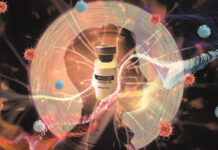The levels of antibody protection against SARS-CoV-2 infection may not last longer than a few months, reveals an article published last week on Nature Medicine.
Of 37 people with a positive test for SARS-CoV-2 but with no clinical symptoms of the disease, 81% tested positive for IgG, an antibody produced 3 to 4 weeks after exposure to the virus. Compared with patients with mild symptoms, asymptomatic individuals had significantly lower levels of IgG in their blood.
After infection, however, antibody levels in the blood decrease, both in asymptomatic and symptomatic patients. In 2 out of every 5 asymptomatic individuals, IgG antibodies disappeared from the serum within two months.
Pulmonary damage in asymptomatic people
Interestingly, the chest CT scans of asymptomatic patients revealed anomalies, including inflammation and other signs of lung damage, in one or both lungs.
This seems to show that, even though infection with SARS-CoV-2 may not lead to a manifestation of symptoms, internal damage may take place. How reversible is this damage remains to be understood.
On average, the viral shedding of asymptomatic patients was 5 days longer than the viral shedding of symptomatic patients. Researchers warn, however, that this finding does not mean asymptomatic people are more infectious because the test for viral shedding might be only revealing the presence of dead viruses.
The asymptomatic participants in this study were selected from a database of 2088 cases that came in close contact with infected individuals in the Wanzhou District, in China.
Taken together, the results of this study emphasize the need for a better understanding of the effects of SARS-CoV-2 infection in asymptomatic people. It is also crucial, researchers emphasize, to do more serological studies in symptomatic and asymptomatic patients, in order to determine the magnitude and duration of antibody-mediated immunity.
Source: Long, Quan-Xin, et al. “Clinical and immunological assessment of asymptomatic SARS-CoV-2 infections.” Nature Medicine (2020): 1-5.
Image Credit: U.S. Air Force photo by Airman 1st Class Jennifer Zima





